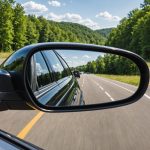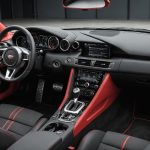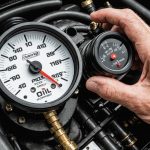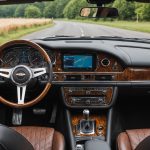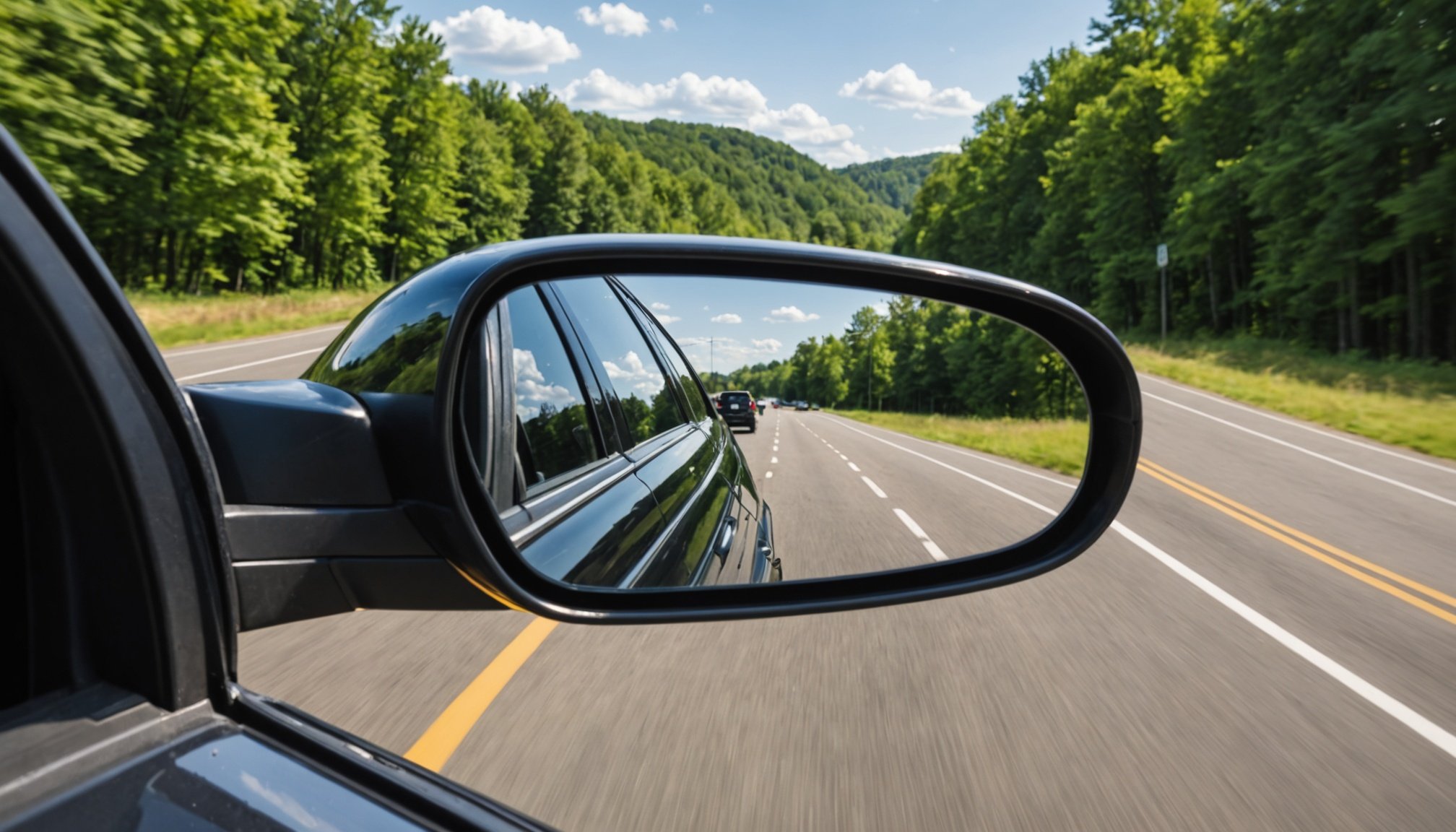Unlocking Blind Spot Safety: Your Comprehensive Handbook for Achieving Optimal Visibility with Hatchback Side Mirror Adjustments
The Importance of Side Mirrors in Vehicle Safety
When it comes to driving, having a clear and unobstructed view of your surroundings is crucial for safety. One of the most critical components in achieving this is your car’s side mirrors. These mirrors are not just an accessory; they are a vital part of your vehicle’s safety features, helping you navigate through traffic, change lanes, and park safely.
“Driving with a damaged side mirror is more than an inconvenience; it’s a risk to your safety and others on the road,” emphasizes a specialist from PorscheGarage.ae. This underscores the necessity of ensuring your side mirrors are in perfect working condition and properly adjusted.
Also read : Perfecting headlight alignment for classic cars: an easy-to-follow guide
Understanding Your Side Mirrors
Before diving into the adjustments, it’s essential to understand the different types of side mirrors available, especially for hatchback vehicles.
Types of Side Mirrors
- Standard Side Mirrors: These provide basic functionality and are designed for durability and clarity.
- Power-Adjustable Mirrors: Equipped with motorized adjustments, these allow for easy customization of the viewing angle without manual effort.
- Heated Side Mirrors: Perfect for colder climates, these prevent fogging and icing, ensuring clear visibility in adverse weather conditions.
- Auto-Dimming Mirrors: These automatically adjust to reduce glare from headlights at night, offering a more comfortable driving experience.
- Folding Side Mirrors: Available in both manual and power-folding options, these are ideal for tight parking spaces.
- Integrated Signal Mirrors: These come with built-in turn signals, increasing visibility for other drivers and enhancing overall safety.
- Blind-Spot Monitoring Mirrors: Equipped with advanced sensors, these provide alerts for vehicles in your blind spots, adding an extra layer of safety while driving[1].
Adjusting Your Side Mirrors for Optimal Visibility
Adjusting your side mirrors is a simple yet crucial task that can significantly enhance your driving safety.
Topic to read : Ultimate handbook: testing and maintaining your vehicle’s oil pressure sensor for peak performance
The SAE Method
The Society of Automotive Engineers (SAE) recommends a specific method for adjusting side mirrors to minimize blind spots.
- Adjust the Rearview Mirror: Start by adjusting your rearview mirror to provide a clear view of the rear window.
- Adjust the Side Mirrors: Adjust the side mirrors so that the edge of the mirror is aligned with the edge of the car. This should be done in such a way that you can just see the side of your car in the mirror.
- Check for Blind Spots: Move your head slightly to the right and left to ensure there are no blind spots. If done correctly, you should see a seamless transition from the rearview mirror to the side mirrors[2].
Step-by-Step Guide to Adjusting Side Mirrors
Here’s a detailed step-by-step guide to help you adjust your side mirrors effectively:
Step 1: Position Yourself
- Sit in the driver’s seat and adjust it to your comfortable driving position.
Step 2: Adjust the Rearview Mirror
- Adjust the rearview mirror so you have a clear view of the rear window without having to move your head.
Step 3: Adjust the Side Mirrors
- Adjust the left side mirror so that the edge of the mirror is aligned with the edge of the car. You should just see the side of your car in the mirror.
- Repeat the same process for the right side mirror.
Step 4: Check for Blind Spots
- Move your head slightly to the right and left to ensure there are no blind spots. You should see a seamless transition from the rearview mirror to the side mirrors.
Advanced Features to Enhance Safety
Many modern hatchbacks come equipped with advanced safety features that can further enhance your visibility and safety.
Blind-Spot Monitoring
- This feature uses sensors to detect vehicles in your blind spots and alerts you through a light on the side mirror or a beep.
- For example, the Porsche Cayenne’s blind-spot monitoring mirrors provide alerts for vehicles in your blind spots, adding an extra layer of safety while driving[1].
Park Assist
- Park assist features use cameras and sensors to help you park safely. These systems can display a 360-degree view of your surroundings on the car’s display screen.
- “Park assist is a key feature that helps in tight parking spaces, ensuring you don’t damage your car or other vehicles,” notes a car safety expert.
Head Display and Rearview Camera
- Some vehicles come with a head display that projects critical information onto the windshield, keeping your eyes on the road.
- A rearview camera provides a clear view of what’s behind your car, helping you avoid obstacles when reversing.
Practical Tips for Maintaining Optimal Visibility
Here are some practical tips to ensure you maintain optimal visibility while driving:
Regularly Clean Your Mirrors
- Make sure to clean your side mirrors regularly to ensure they remain free from dirt, dust, and other obstructions.
Adjust Mirrors for Different Drivers
- If multiple people drive the car, adjust the mirrors for each driver to ensure they have the best possible view.
Use Heated Mirrors in Cold Weather
- If your car is equipped with heated side mirrors, use them in cold weather to prevent fogging and icing.
Consider Upgrading to Advanced Mirrors
- If your current side mirrors lack advanced features, consider upgrading to mirrors with integrated signal lights, blind-spot monitoring, or auto-dimming capabilities.
Cost Considerations for Side Mirror Replacement
If your side mirror is damaged, it’s essential to consider the costs involved in replacing it.
Types of Replacement Options
- New vs. Used Mirrors: New mirrors come with a warranty and guaranteed compatibility but are more expensive. Used mirrors are more affordable but may vary in performance[1].
- OEM vs. Aftermarket: OEM mirrors are more expensive but ensure quality, while aftermarket options are less costly but may vary in performance[1].
Labor and Additional Costs
- Basic Installation: Professional installation typically costs between $200 to $500.
- Calibration Services: Mirrors with sensors or cameras require calibration, which adds $300 to $600.
- Painting and Service Fees: Additional costs may include painting the new mirror housing and service fees such as VAT[1].
Table: Comparative Costs for Side Mirror Replacement
| Type of Mirror | Cost Range | Additional Costs |
|---|---|---|
| Standard Mirrors | $290 – $420 | Labor: $200 – $500 |
| Advanced Mirrors | $600 – $800 | Calibration: $300 – $600 |
| OEM Mirrors | $400 – $600 | Painting: $500 – $1,000 |
| Aftermarket Mirrors | $200 – $400 | Service Fees: Varies |
| Used Mirrors | $100 – $300 |
Achieving optimal visibility with your hatchback’s side mirrors is a straightforward process that can significantly enhance your driving safety. By understanding the different types of side mirrors, following the SAE method for adjustments, and considering advanced safety features, you can drive more confidently and safely.
Remember, “Driving with bad side mirrors is a safety risk, so you must replace yours right away if they’re broken in any way,” advises a mechanic from CarParts.com. Stay safe on the road by ensuring your side mirrors are always in top condition and properly adjusted.
Additional Resources
- SAE Method for Adjusting Side Mirrors: For a detailed guide on how to adjust your side mirrors using the SAE method, you can refer to automotive safety guidelines.
- Advanced Safety Features: Check your car’s manual or manufacturer’s website to learn more about the advanced safety features available in your vehicle.
- Professional Installation: If you’re not comfortable replacing the side mirror yourself, consider taking your car to a professional mechanic or a dealership for assistance[2].

